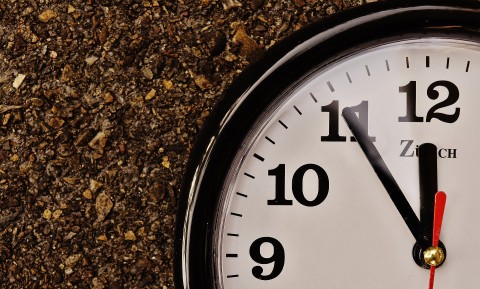Caroline Dennigan
Teach Your Child How To Tell The Time
Teaching children to tell the time has always been considered to be a bit tricky. True, it is not the easiest skill to teach, but it is by far one of the most rewarding.
Why is it so hard learning how to tell the time?
We spend years teaching kids about our number system based on '10'. Everything from 'Place Value' to 'metric measurements' follow the reassuringly logical premise that things come in 10s, 100s and 1000s and so on.
Then we suddenly throw in a system based on 5s, 12s, 24s and 60s! Where's the logic in that?
No wonder they get confused. In addition, we use various methods for saying the same time, we use Roman numerals, digital clocks, and sometimes don't even have digits at all. The whole thing is a mess!
So, with that in mind, here are 9 simple, time-teaching steps and activities to help your child grasp this new and important milestone:
1- Before diving in and explaining the details on a clock face, start off with the overall notion of the passage of time and introduce morning, afternoon and evening. Kids need to get a 'feel' for roughly how long the main units are.
2- Get into the routine of helping your child to track time during the morning, afternoon and evening. For instance, show them the appropriate time on the clock when it's breakfast time, their favourite television programme is about to start, time to go to dance class, dinner time or when it's nearly bedtime. (I even have an alarm clock sounding on my phone at this parents' favourite time of day!)
3- In your child's bedroom, hang a simple children's clock with clear numbers and marks for each minute so your child will understand there are 5 minutes between each number. (At this stage avoid digital clocks, Roman numerals or clocks without digits.)
4- Explain that the big hand on the clock shows the minutes and the short hand shows the hour.
(You might be interested in this post: What is the right age for a child to get a private primary tutor?)
5- Teach your child that there are 60 minutes in each hour and show them the concept by moving the small hand round the clock face once to illustrate 1 hour and that once an hour has passed, the large hand will move to the next number on the clock face. (It REALLY helps at this stage if you can actually demonstrate the clocks motion speeded up. You could do this with some analogue clocks but you may want to invest in a 'teaching clock' from a toy shop.)
6- Once your child has grasped o'clock and half-past, practise counting in 5s to help them tell the time at 5 minute periods, underlining quarter past and quarter to.
7- In the bathroom set an electronic or sand timer for 2 minutes so your child knows how long to brush their teeth for.
8- Do provide plenty of opportunities for your child to access an analogue clock or two at home. Clocks geared (or geared clocks!) towards children are ideal. Here is a good one we like - well under a tenner at time of writing. Teaching Clock Link.
9- A good trick is to let your child have 15 minutes to play on the Ipad and have them tell you when 15 minutes is up. After a couple of weeks, they will become attentive clock watchers and they might even start reminding you when it's time to do things!
Do bear in mind, the skill of telling the time can be complicated to master so take it step by step. Counting is the key for telling the time and the more confident your child is with counting from 1 to 60 as well as the 5 times table, the easier their time telling will become.
They will also need time to develop an 'internal awareness' of the relative lengths of the time periods taught i.e. 5-minute chunks, 15-minute chunks and so on.
Wikihow also shares some great ideas for teaching children to tell the time.
Of course, a one to one tutor can do this job more efficiently - just give us a call!
Alternatively, you can register for our email list to make sure you don't miss another post - simply follow this link:

